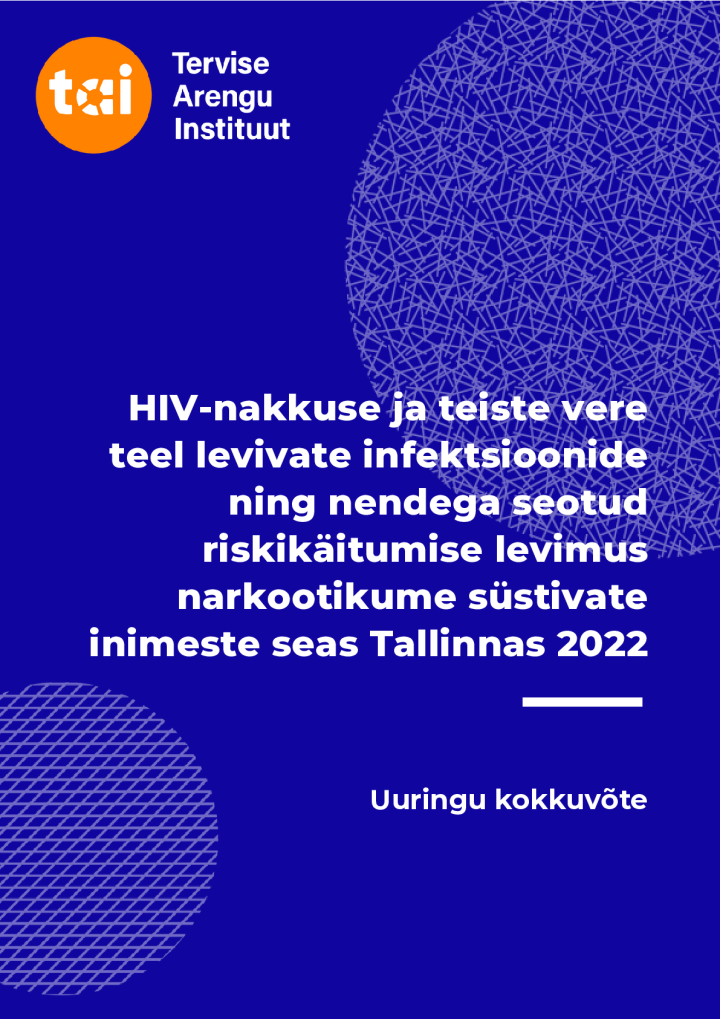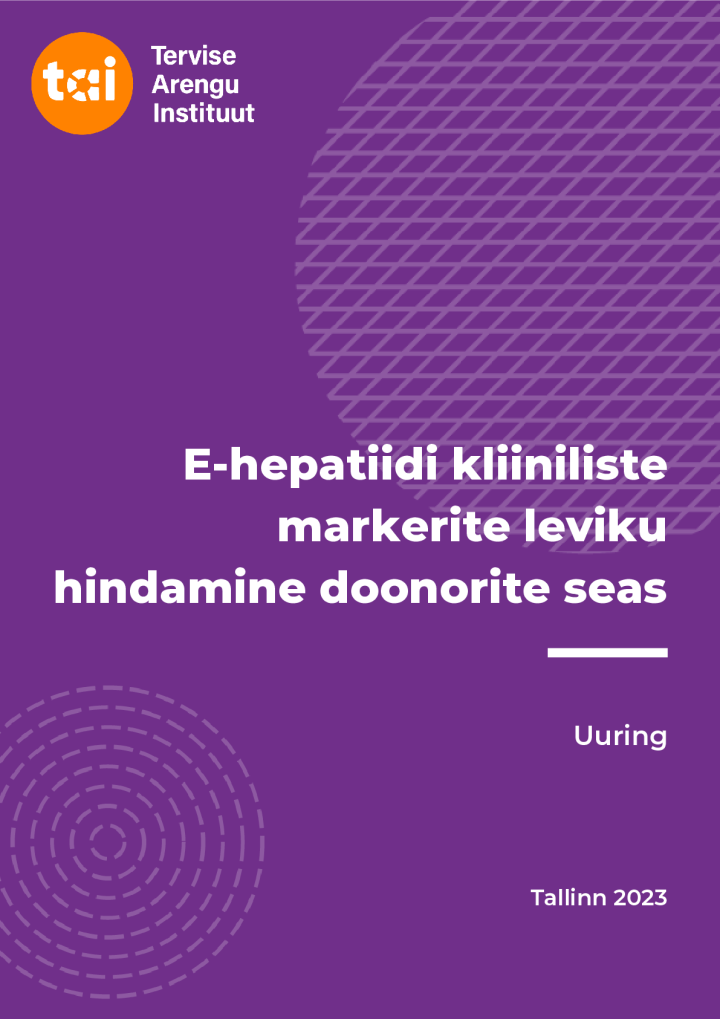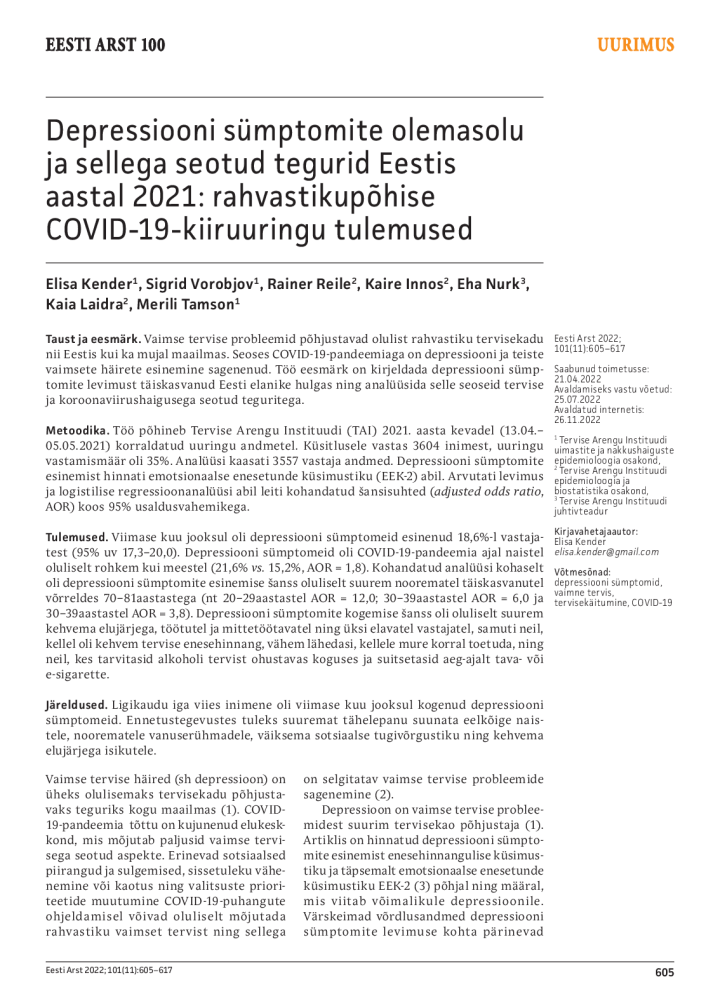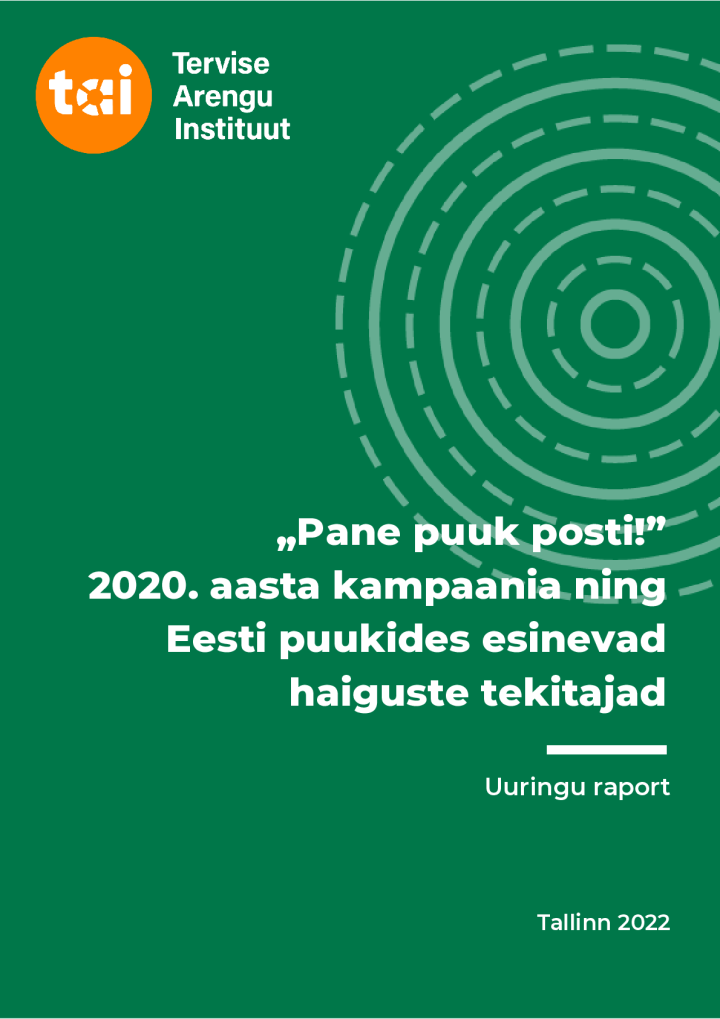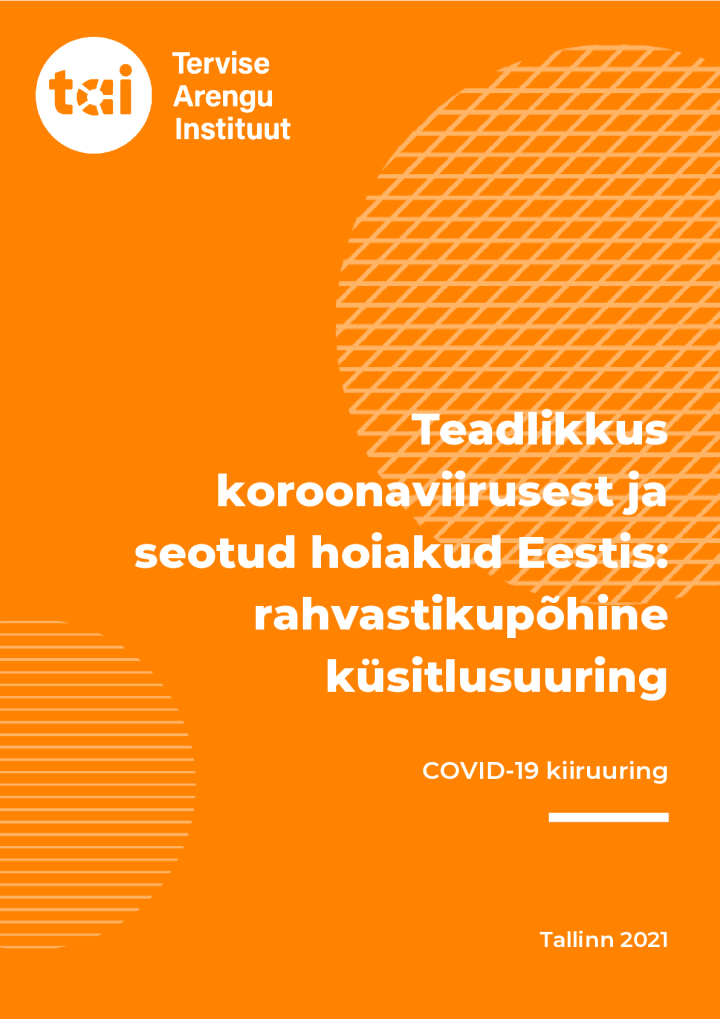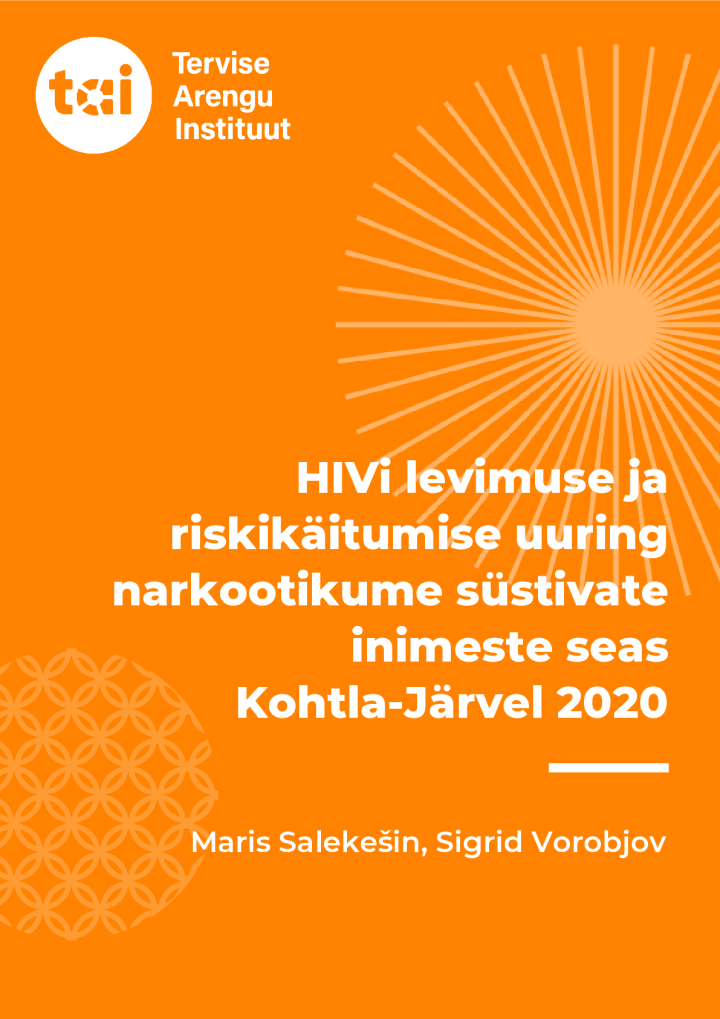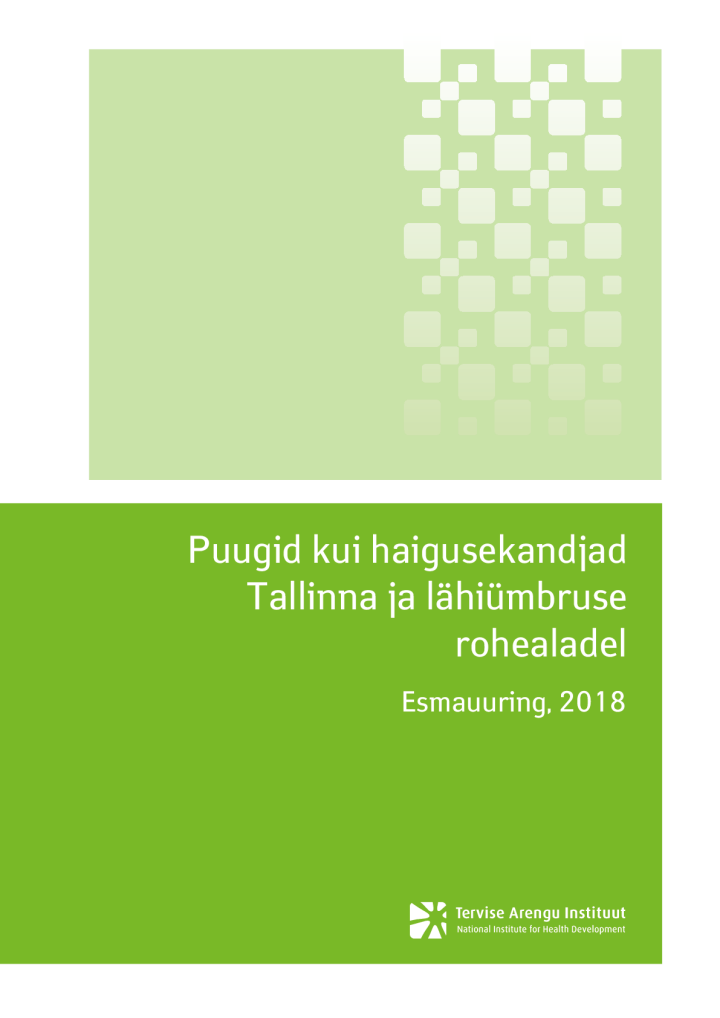Infectious disease research
In the field of communicable diseases, our long-standing research interests include the surveillance and prevalence of infectious diseases linked to risk behaviour and tick-borne infectious diseases. A more recent area of research is the epidemiological situation of COVID-19.
Infectious diseases linked to risk behaviour
We are investigating the prevalence of infectious diseases associated with risk behaviours – HIV and hepatitis viruses, in particular in at-risk groups such as people who inject drugs, men who have sex with men and women involved in prostitution.
Key studies
- HIV prevalence and risk behaviour among people who inject drugs (since 2005)
Surveys carried out in different regions of Estonia provide a comprehensive overview of the risk behaviours of the target population, drug use, prevalence of blood-borne infectious diseases (HIV, hepatitis B and C) and changes in them over time. The surveys are an important input for the development of services aimed at the target population and for the design of new services. See survey reports.
Tick-borne infectious diseases
Key studies
- Ticks and tick-borne diseases: a study on risk areas, prevalence and diversity (since 2017)
The aim of the study is to map, improve and update data on the occurrence, regional abundance, species diversity and human health risk of ticks and tick-transmitted diseases in Estonia.
- Ticks as disease vectors in green areas in and around Tallinna preliminary survey (2018–2019)
The aim of the study was to identify and describe the risks of getting bitten by a tick and acquiring tick-borne diseases for humans in popular green areas in and around Tallinn. For the survey, ticks were collected from vegetation at around 20 different locations in the spring of 2018. See the results in the report „Ticks as disease vectors in green areas in and around Tallinn. Preliminary survey, 2018“.
- Creation and development of the puugiinfo.ee website, citizen science campaign „Put a tick in the post!“. (since 2020)
In 2020, the first NIHD citizen science survey and the „Put a tick in the post!“ campaign took place, where we invited people to share information on tick bites, helping to identify tick risk areas. The research used information gathered from humans regarding tick occurrence and/or ticks bites reported from different parts of Estonia to identify the presence and spread of the tick-borne pathogens.
To share the information, participants – any person with no registration required – had to enter tick information on the map application of the campaign's website puugiinfo.ee. The tick specimen could also be sent to the NIHD for analysis. The wider aim of the campaign was to inform people about tick-prone areas and to improve knowledge and skills to prevent tick infestations. When people marked a tick finding event on the map, they filled in an anonymous questionnaire which helped to identify geographical locations, natural areas and other circumstances related to the exposure to ticks. See the report „Put a tick in the post! The 2020 campaign and the disease-causing agents in Estonian ticks.
- Natural treatment candidates for Lyme disease (from 2019)
The study is carried out in collaboration with the Institute of Chemistry and Biotechnology at TalTech, using the TalTech Cell Culture Laboratory. The aim of the study is to identify substances from plants growing in Estonia that would be effective in the treatment of Lyme disease that is in it’s late stage, untreated or is difficult to treat with antibiotics. Extracts from plants growing in the wild in Estonia will be tested on a cell culture of the causative agents of Lyme borreliosis.
Collaborative projects
- European network for medical and veterinary entomology (VectorNet, ECDC). The European Food Safety Authority (EFSA) project aims to help improve preparedness and response to vector-borne diseases. VectorNet supports the collection of data on vectors and pathogens related to both animal and human health. It is a network of medical and veterinary experts and organisations that aims to create a common database on the occurrence and spread of vectors and pathogens in vectors across Europe and the Mediterranean region.
- ECDC Emerging vector-borne diseases (EVD) – Working Group on vector-borne diseases at the European Centre for Disease Prevention and Control. The aim of the group is to exchange information on the occurrence, surveillance, outbreaks and spread of vectors and vector-borne diseases. The group provides input to the European Commission on the occurrence and characterisation of vector-borne diseases and develops response scenarios in case of possible outbreaks.
COVID-19
- Awareness of and attitudes towards coronavirus in Estonia: a population-based survey. COVID-19 rapid assessment survey (2021).
The aim of the survey was to assess the knowledge, attitudes and related health behaviours among Estonian population during the coronavirus pandemic and their exposure to the coronavirus and the COVID-19 disease prevalence. See the survey report „Awareness of and attitudes towards coronavirus in Estonia: a population-based survey. COVID-19 rapid assessment survey“.
